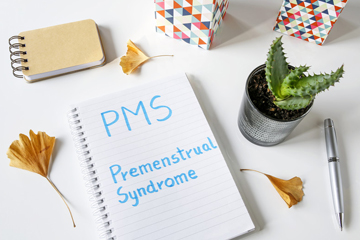Being physically active is a crucial part of a healthy lifestyle with benefits ranging from mental well being to physical health. Regular exercise helps you stay strong, maintain a healthy weight and reduce your chances of getting serious diseases such as diabetes, high blood pressure and so on. However, some women refrain from exercise during their periods, thinking it might hurt them or increase premenstrual Syndrome (PMS) pain.
PMS is a group of changes that appears before your menstrual cycle and can affect you on many levels – physical, emotional, or behavioral. The changes appear 1 to 2 weeks before your period. Once your period starts, they go away. These symptoms that show up every month tend to affect a woman’s normal life. Many women stop exercising, thinking it might worsen PMS pain. The truth is that exercise can improve PMS symptoms. According to the American College of Obstetricians and Gynecologists, “for many women, regular aerobic exercise lessens PMS symptoms such as fatigue and depression. ”
What are the exercises that can help relieve PMS symptoms? Some studies suggest that aerobic exercise, which includes brisk walking, running, cycling, and swimming, can help improve PMS symptoms as they improve heart rate and lung function. These exercises also help improve mood by boosting important brain chemicals called endorphins, which helps to reduce the amount of pain you feel from PMS. WebMD reports on a study which found that women who did 60-minute aerobic sessions three times a week for 8 weeks felt improved physically, mentally, and emotionally.
Experts also recommend yoga to reduce the stress, which is a large part of managing your PMS symptoms. A combination of gentle stretching, breathing techniques, and meditation, yoga can ease muscle tension, improve focus, and decrease moodiness. WebMD also notes that a study found that many women who participated in a 12-week yoga program had less menstrual pain, cramps, and bloating with more energy and a better mood. Another study showed that certain yoga poses such as “cobra,” “cat,” and “fish” helped ease painful cramping (dysmenorrhea).
While regular exercise could improve PMS symptoms, it’s important not to overdo it, as this can be detrimental and potentially upset your menstrual cycle too. Extremely vigorous workouts may aggravate PMS symptoms rather than relieve them. This is because the muscles move differently during menstruation and injuries are more likely to happen. Adding certain strengthening and balancing exercises to your fitness routine might help lower your chances of getting hurt. If you think that your periods have stopped due to too much exercise, try resting for a week or two, and you might find your period reappears.
Along with keeping disease at bay and relieving PMS symptoms, regular exercise can improve sleep, and help keep bloating and water retention under control. Remember to drink plenty of water and stay hydrated during your physical activity sessions.
